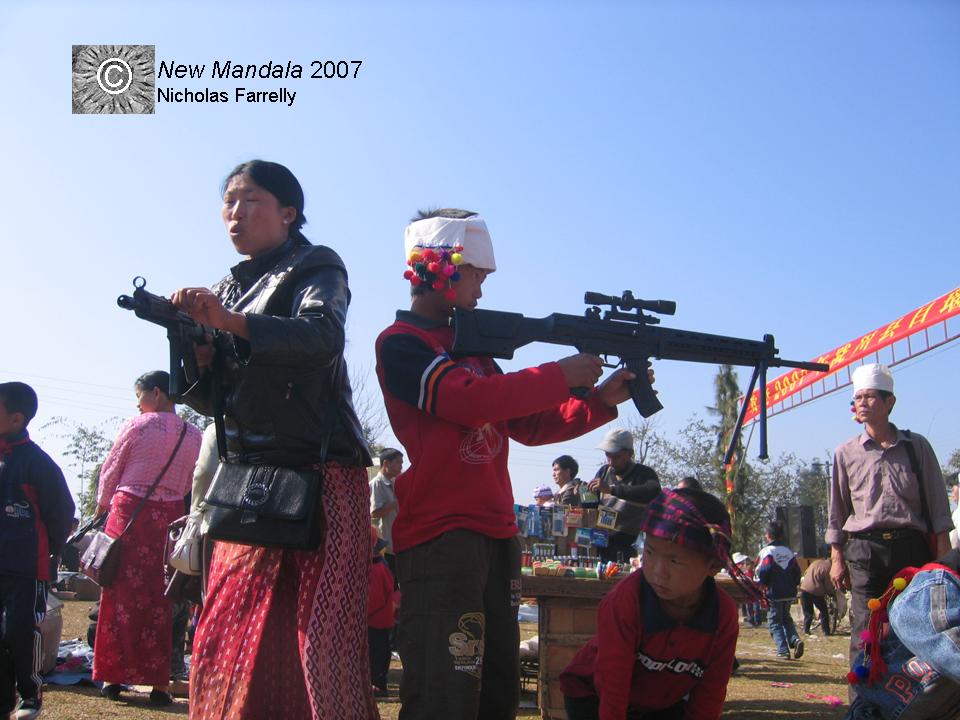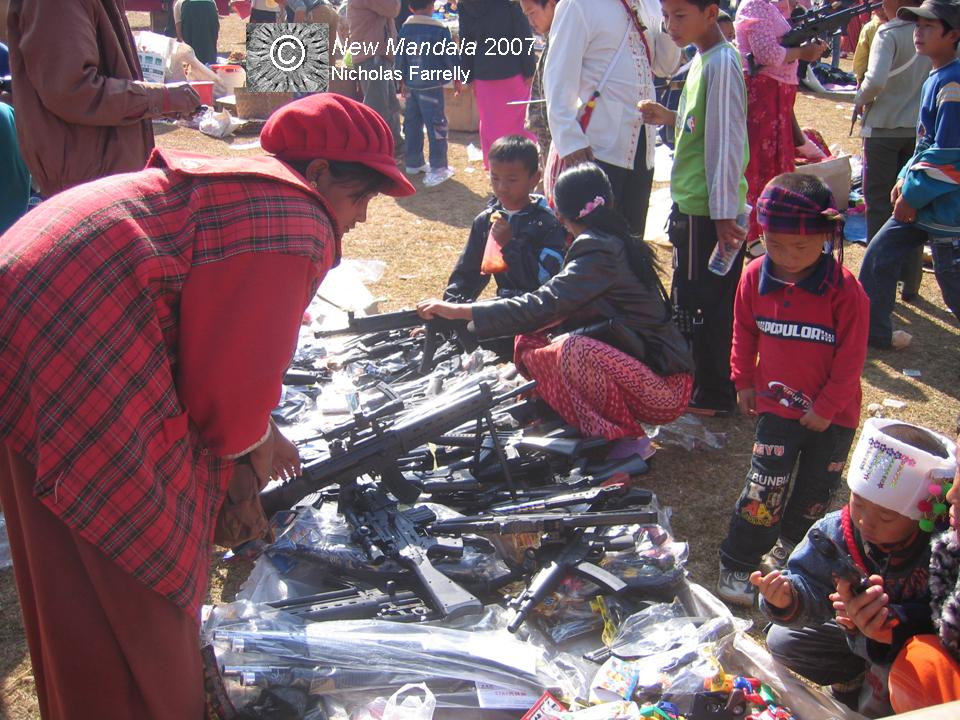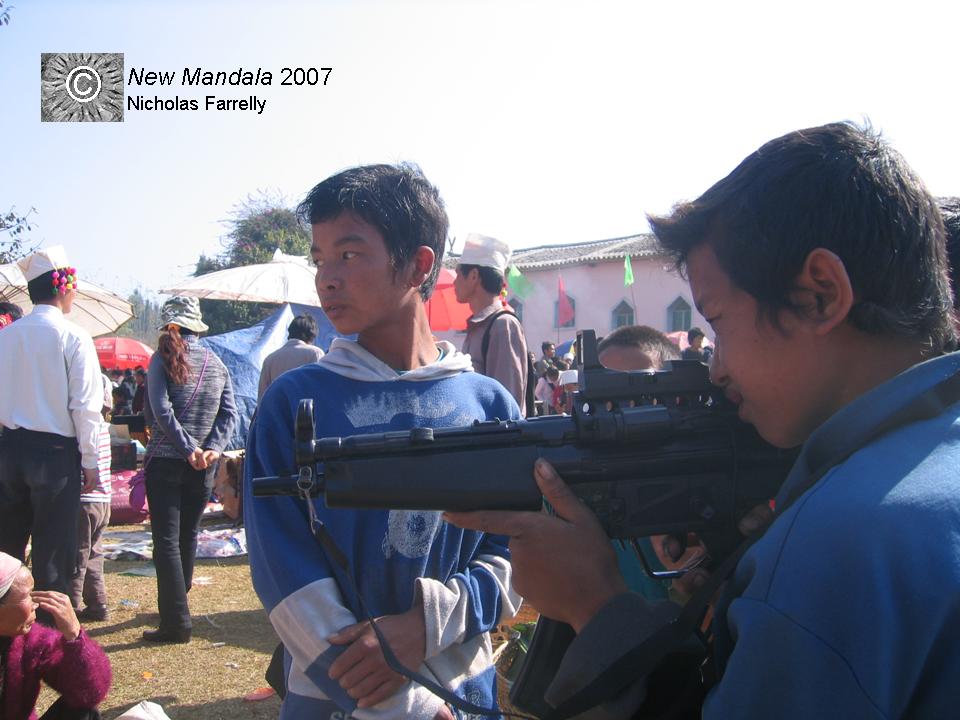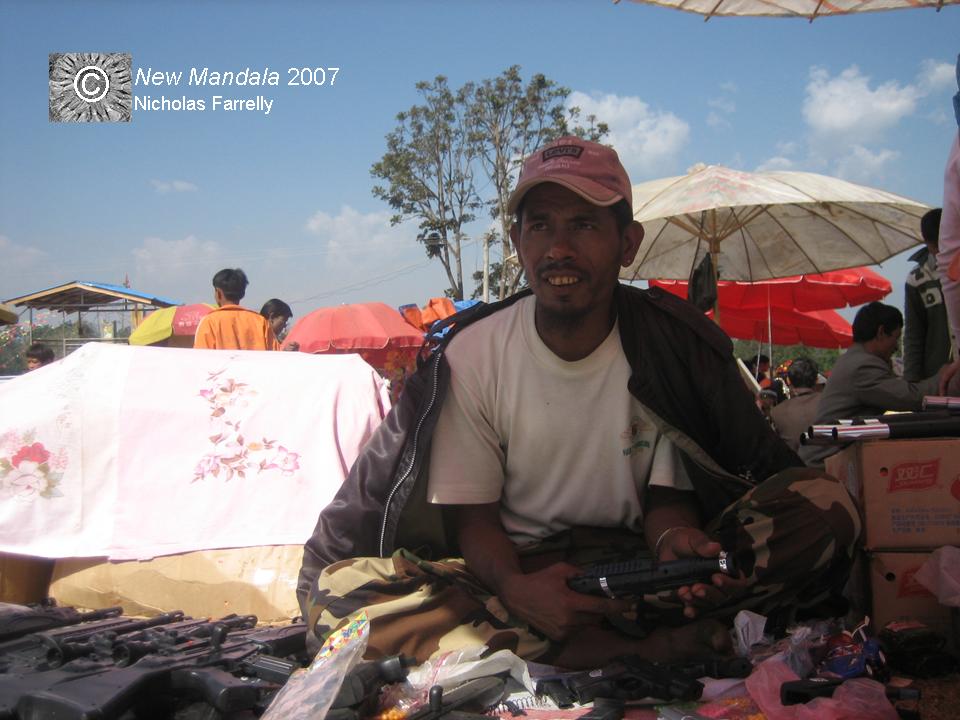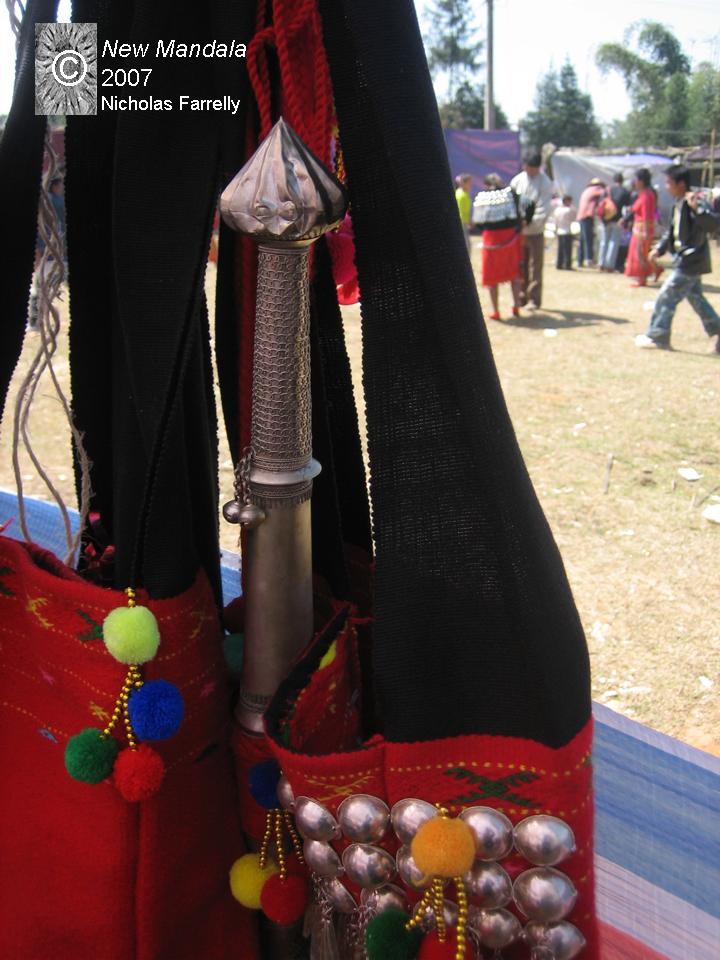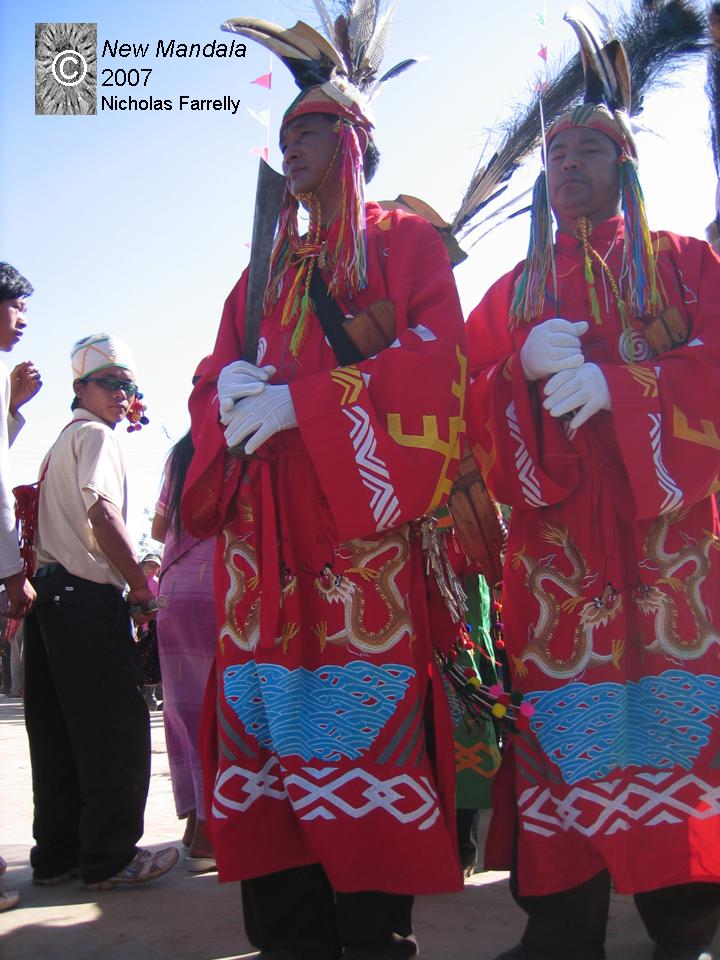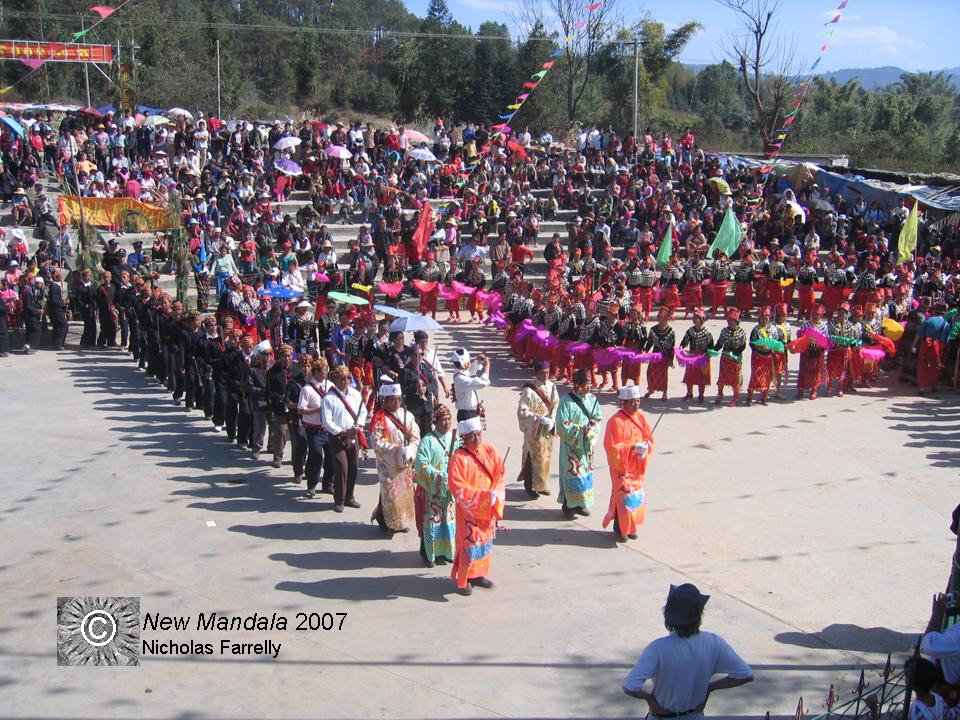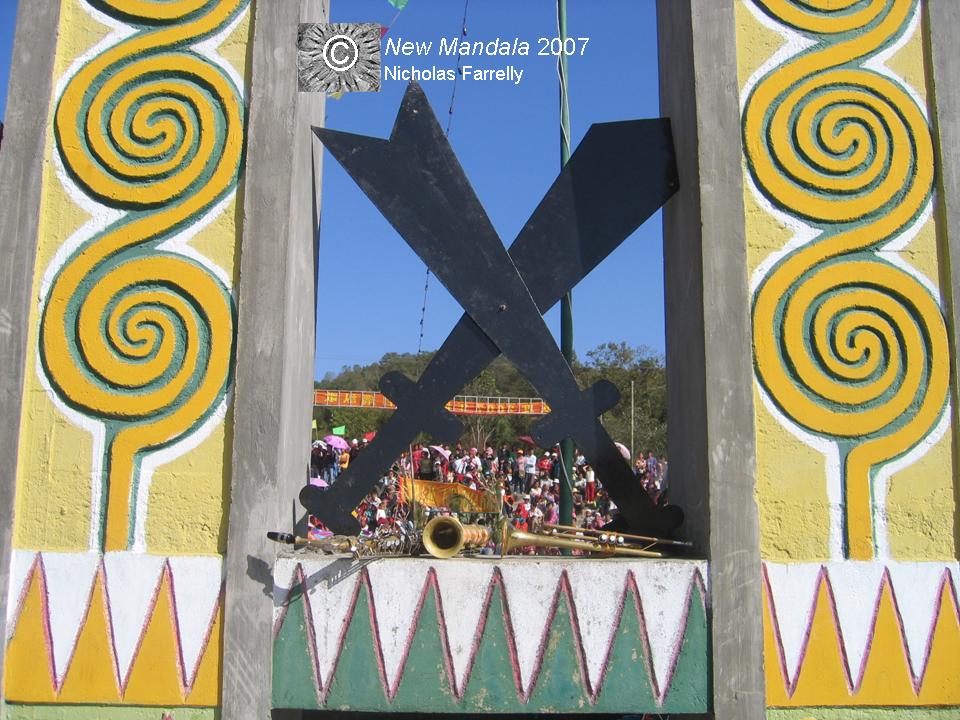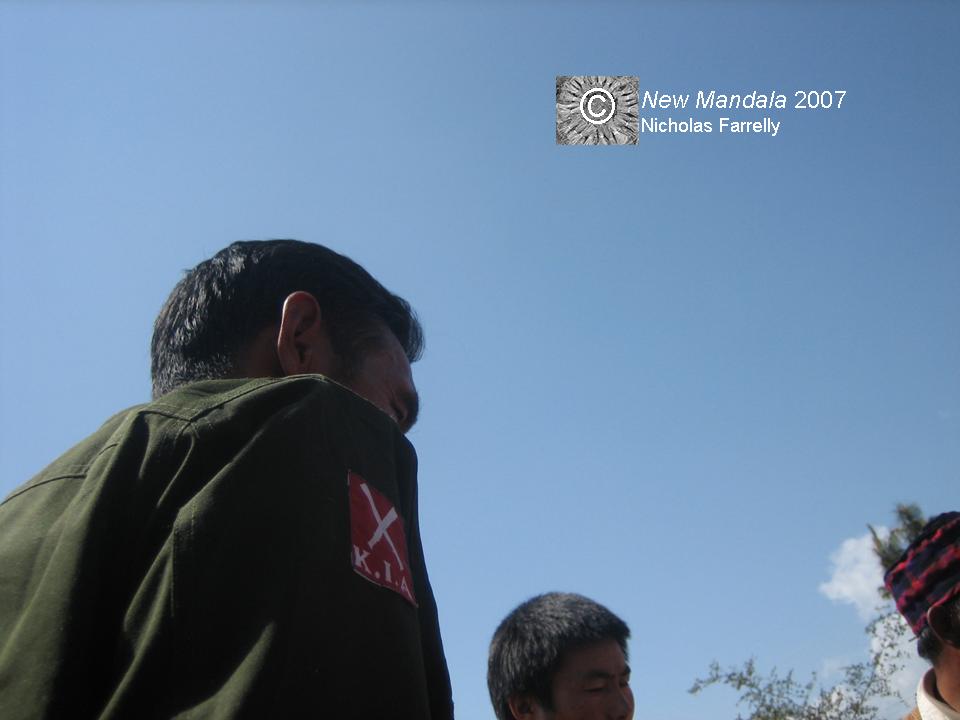My next posts in the “Yunnan Fringe” series will provide information and analysis on a Manau festival that was held in far western Yunnan, within sight of Burma, in March 2007. Some of these posts will focus on what goes on around the periphery of a Manau, in the areas where most people never point their cameras or focus their gaze. I hope to provide some record of the life and colour of the Manau beyond the more common images of formation dancing and colourful outfits.
From the first moment that I arrived in the village where this Manau was held I was struck (sometimes quite literally) by the groups of children running around with plastic guns. These guns – most of which can fire small pellets at high velocity – were for sale all over the Manau ground. The “gun” traders, who were almost all Burmese Muslims, were selling hundreds of these Chinese-made pistols, rifles and shotguns to young Jingpo, Shan and Chinese boys, and their parents.
Of course, many young boys (and girls) around the world love replica firearms, and delight in shooting their friends with any new armaments they can get their hands on. At the Manau not only was the variety of replica weapon technology on display quite remarkable but there was a general acceptance that the children (and even some adults) would spend every hour with their guns – firing at people, setting up targets and even ambushing other “armed” groups.
To give New Mandala readers some appreciation for this “gun culture” I have provided a small selection of my photos and video that help to clarify some of this unexpected activity.
Snapshot 1: Browsing for weapons
Some of the dozens of Burmese traders selling plastic guns at the Manau festival told me that a simple, small gun would sell for only 6 Yuan. More complex and powerful weapons could be had for up to 30 Yuan. They indicated that because most people who attended the festival had relatively little discretionary income it was worth selling large numbers of cheap guns, rather than just a few more expensive ones.
Snapshot 2: A plastic gun store
This short, unedited video should give New Mandala readers more of a feel for the ambience of the Manau festival and its “gun” culture. I can be heard on this particular clip in conversation with the replica gun salesman. I ask him if I can take his picture, and then he grabs the big gun to strike a pose!
Snapshot 3: Taking aim
This gun cost 20 Yuan. Some of the boys said it could hit a target at least 25 metres away. Somewhat surprisingly, this boy is shooting at a crowd of young adults – but I don’t think he hit anyone!
Snapshot 4: Waiting for customers
Snapshot 5: Jingpo sword and bag
Of course, the Jingpo in China (and their Kachin cousins in Burma) have a long association with warfare and weapons that goes back (in most accounts) right to the start of their southwards migration. On both sides of the border there are lots of guns and swords, and every male dancer in the large Manau dances carries a ceremonial piece. It is not just the young boys who get armed for the Manau festivities.
Snapshot 6:
Snapshot 7: Dancing with swords
This picture, taken on the last day of the Manau festivities, gives a clearer idea of the prominent position of swords in the Manau dances. I will be writing much more about the dances, and their implications, in future posts as part of the New Mandala feature on the “Yunnan Fringe“.
Snapshot 8: Kachin Swords at the Manau Ground
The Kachin Independence Army (KIA) – which fought the Burmese government from 1961 until ceasefire negotiations began in 1993 – uses crossed Kachin swords as its main symbol. Some, but certainly not all, people at this Manau had strong connections to Kachin in Burma, and to the KIA.
Snapshot 9: KIA shoulder patch
There is much more that can be written about the guns and swords that featured at this Manau festival. These images and brief notes are just a start.
Very soon, I will be bringing New Mandala readers a taste of other elements of the Manau including a long discussion of photography, and its place in the festivities.
 Facebook
Facebook  Twitter
Twitter  Soundcloud
Soundcloud  Youtube
Youtube  Rss
Rss 